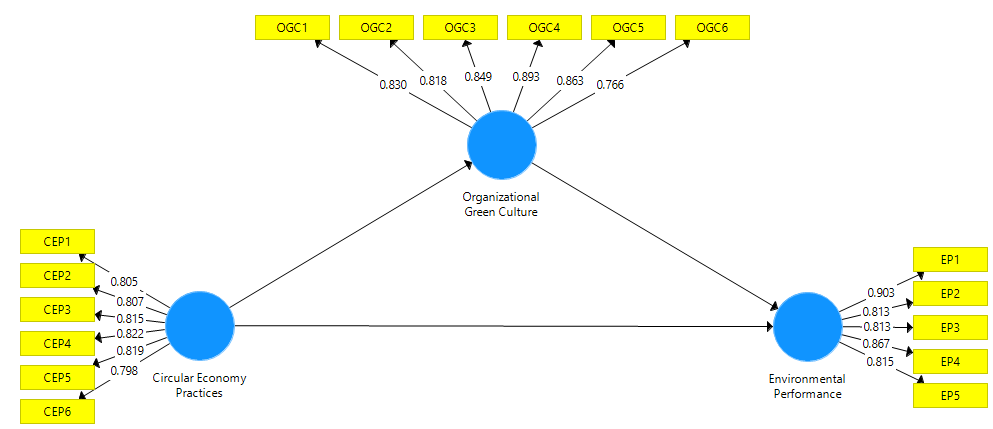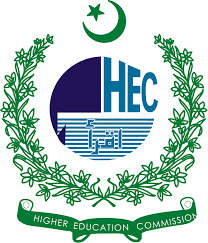IMPACT OF CIRCULAR ECONOMY PRACTICES ON ENVIRONMENTAL PERFORMANCE IN SMES MANUFACTURING FIRMS: MEDIATING ROLE OF ORGANIZATIONAL GREEN CULTURE
DOI:
https://doi.org/10.71146/kjmr117Keywords:
Circular Economy Practices, Environmental Performance, Organizational Green CultureAbstract
This represents an original contribution to the Resource-based view (RBV) theory because it investigates the relationship between Circular Economy Practices (CEP), Organizational green Culture (OGC), and the environmental performance of small and medium-sized enterprises (SMEs) in the manufacturing sector of Pakistan. It is quantitative research and uses a normal structured survey process of collecting primary data from various SME employees, thus giving us a total sample size of 208. Statistical techniques such as structural equation modeling are used to analyze for positive relationships of the solid and direct constructs and find Circular Economy Practices that significantly influence Organizational Green Culture and Environmental performance. In addition, the results from the study have practical implications for SMEs. Findings from the partial mediation of circularity practices on the relationship between organizational green culture and environmental performance point to the importance of organizational green culture in increasing sustainability outcomes. In addition, the study extends the RBV theory to show how circular economy practices can act as strategic resources to reinforce organizational culture and environmental performance. In light of the above, the paper emphasizes the need to achieve the benefits of circular practices by integrating sustainability into SME core strategies and creating a green organizational culture. With a clearer understanding of the actual costs, SMEs now have a guide to follow for greener operations and to become environmental leaders in environmentally responsible practice.
Downloads

Downloads
Published
Issue
Section
License
Copyright (c) 2024 Ikramuddin Junejo , Dr. Syed Salahuddin, Sarfraz Ali Malak , Muhammad Sufyan Ramish (Author)

This work is licensed under a Creative Commons Attribution 4.0 International License.






